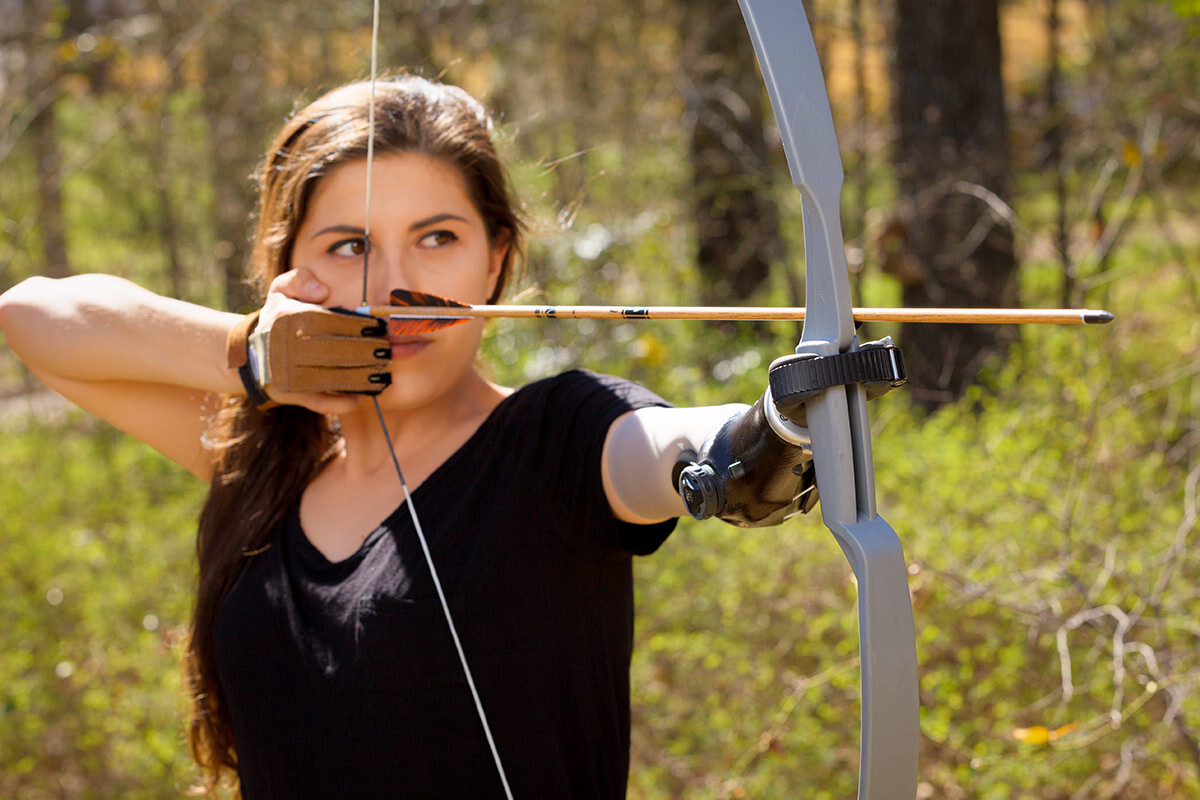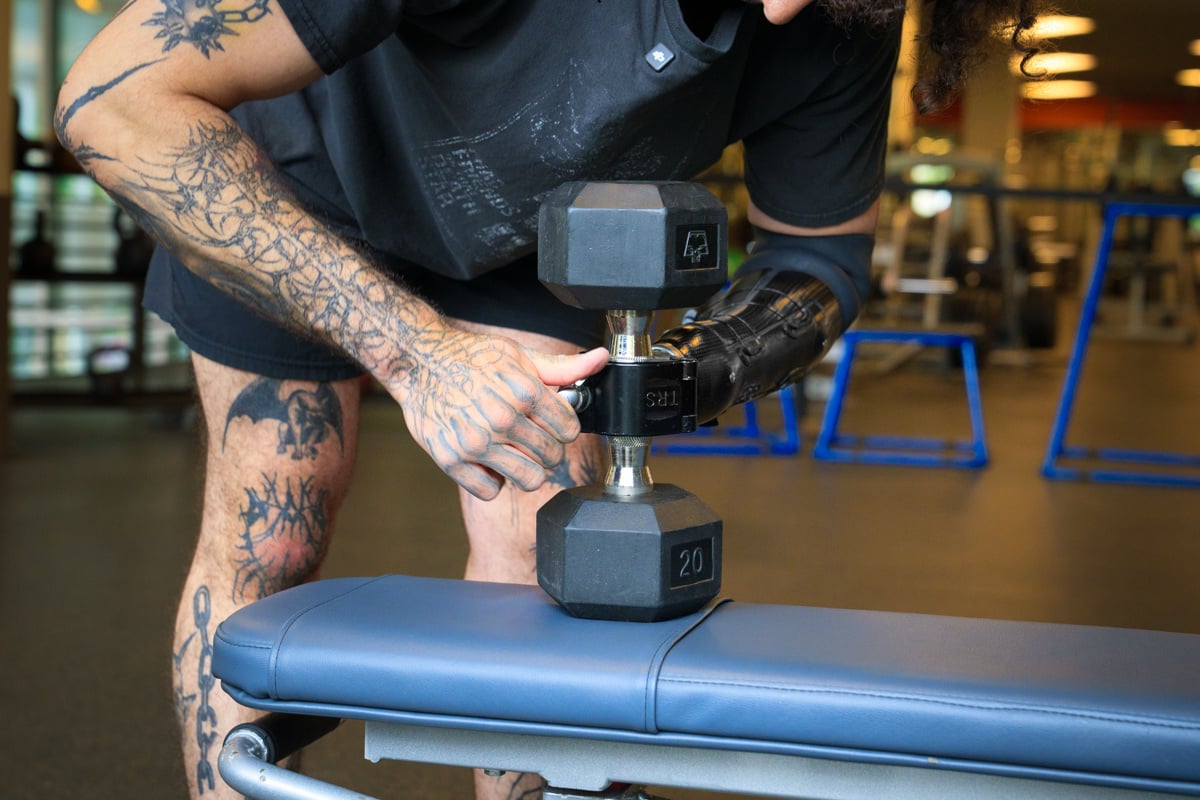In upper limb prosthetics, we know that the term “activity-specific” brings to mind playing sports, engaging in hobbies and other leisure activities. But activity-specific devices can also be integral in getting people back to work or helping them do their job safely and with good body mechanics. Read on to learn about three of our patients who needed an activity-specific terminal device so they could do their job.
Austin Anderson
Austin had recently started his dream job as a tree faller at Yosemite National Park. Then, while helping a friend trim a tree in his neighborhood, Austin was involved in an accident where he lost his arm above the elbow. Could Austin return to his dream job? The first prosthetic providers Austin visited told him no — there was no way to build a device that could allow him to quickly release his chainsaw so he could safely return to work. But our prosthetist in our Portland, OR, center, Mac, told him yes. Watch Austin’s story:
Max Okun
Max has a congenital limb difference. His parents tried a few prostheses on him as a kid, but he would inevitably take them off at school, finding them bulky and unhelpful. This led to Max being a young man who didn’t wear a prosthesis. This was working okay for him until he began to pursue a career as a personal trainer. Personal trainers need to work out as much as or more than their clients, and so Max was going to the gym often. During this time, he began to develop serious shoulder pain. It was recommended he visit with a prosthetist and clinical therapy specialist who could tell that Max was suffering from overuse issues. The trouble was that Max was putting too much strain on his sound side — his workout was lopsided. Max needed to find a prosthetic solution that would allow him to work out both sides of his body equally. He found that with a combination of activity-specific terminal devices and the adjustable BOA lacing system to help him keep his device on during his heavy-duty workouts, he could safely workout and reduce his overuse issues. Watch Max’s story:
Wendi Parker
Wendi shattered her elbow in a snowboarding accident back in 2006. After 12 years of surgeries that brought no relief for her pain, she decided on an elective amputation above her elbow. It took her a bit to start wearing a prosthesis, and in the meantime, she got used to having a short arm. Once Wendi did start wearing a prosthesis, she decided that a shorter option would work better for at her job and other activities. Her prosthesis doesn’t have a forearm, just a socket with an external locking elbow, adjustable BOA lacing system and her terminal device. Our clinical therapy specialist, Jamie in our Portland, OR center, where Wendi goes, further describes the device: “For Wendi, having something simple due to her humeral/elbow pain helped decrease the weight and improved usage.” Wendi works at Trader Joe’s and wears two different terminal devices while on the job, her V2P and her Multi-D. The Multi-D is often considered an activity-specific device because it is used for weightlifting — and Wendi does use it for that as well. But at Trader Joe’s, she finds it invaluable for some tasks, including pulling the long lines of carts. Wendi also has an activity-specific terminal device, the TRS Shroom Tumbler, that she uses during her workouts — a necessary pursuit to keep her body in shape for her physically demanding job. Watch Wendi’s story:
The right activity-specific device can be the difference between someone getting back to work and someone staying on disability while they decide what career they are capable of as an upper limb amputee. But it’s not just the device. As you can see in Austin’s video, our clinical therapy specialists teach our patients how to use their prosthesis. In Austin’s case we provided him with logs to cut using his chainsaw and his terminal device.
If you or someone you know is interested in meeting with the Arm Dynamics clinical team to discuss what prosthetic options are available to get them back to work or back to doing what they love, please contact us. If you’d like to leave a comment, please do so below.





%20President%20and%20Senior%20Clinical%20Director.jpg?width=600&height=600&name=John%20M.%20Miguelez%2c%20CP%2c%20FAAOP(D)%20President%20and%20Senior%20Clinical%20Director.jpg)










No Comments Yet
Let us know what you think